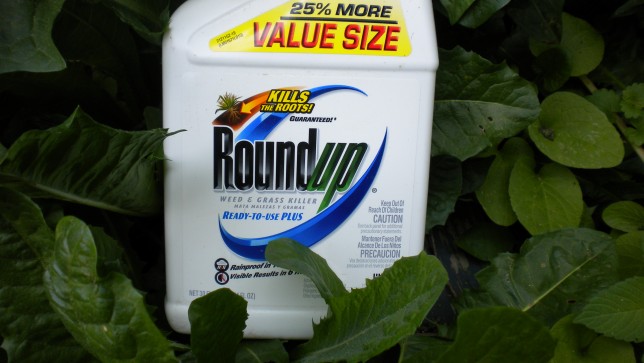A new ground-breaking peer-reviewed study has been published in Environmental Health Journal that shows the levels of glyphosate-based herbicides which the general public are commonly exposed to in drinking water, altered the gene function of over 4000 genes in the livers and kidneys of rats.

The study results suggest that long-term exposure to an ultra-low, environmental dose of Roundup at an glyphosate-equivalent concentration of only 50 ppt (parts per trillion), in an established laboratory animal toxicity model system, can result in liver and kidney damage, with potential significant health implications for humans as well as domesticated animal and wildlife populations.
The study performed by Dr. Michael Antoniou’s team at King’s College London was a followup investigation of the long-term (2-year) toxicity study in rats of Roundup conducted by Dr. Gilles-Eric Seralini and colleagues (Seralini et al., 2014).
The Seralini investigation administered a commercial Roundup formulation at 0.1 ppb (parts per billion)/50 ppt (parts per trillion) glyphosate via drinking water for 2 years. Analysis at an anatomical (organ) and blood/urine biochemical level suggested a higher incidence of liver and kidney damage in the Roundup treatment group compared to the control. Liver and kidney pathologies were also present in the control group due to the advanced age of the animals, but at a lower rate of incidence.
Different patterns of gene function; i.e., which genes are turned off or on and at what level, are known to underlie health and disease status of an organ system.
The new study by Dr. Antoniou’s team investigated whether heightened liver and kidney pathology observed at an anatomical and biochemical level was reflected in the gene expression pattern. Therefore the pattern of gene function (“transcriptome”) was analysed, by comparing liver and kidney tissues from the Roundup treatment group with those of the control animals.
Dr. Antoniou stated; “The findings of our study are very worrying as they confirm that a very low level of consumption of Roundup weedkiller over the long term can result in liver and kidney damage. Our results also suggest that regulators should re-consider the safety evaluation of glyphosate-based herbicides.”
Findings
- A distinct and consistant alteration in the pattern of gene function was found in both the liver and kidneys of the Roundup treatment group.
- A large number (over 4000) of genes were found to be either increased or decreased in function, with many (over 1300) being affected in both organs.
- These changes in gene function were consistent between animals and were highly statistically significant.
- A computational (‘bioinformatics’) analysis of the alterations in gene function linked these changes to numerous biochemical systems invloved in regulating gene expression, respiration, and disturbances in fat metabolism.
- The alterations in gene function were consistent with fibrosis (scarring), necrosis (areas of dead tissue), phospholipidosis (disturbed fat metabolism) and damage to mitochondria (the centres of respiration in cells).
- These changes correlate with and thus confirm observations of pathology made at an anatomical, histological (microscopic cellular) and blood/urine biochemical level.
Conclusions
- The glyphosate equivalent dose of Roundup administered in this study was half that permitted in drinking water in the European Union and Australia, and 14,000 times lower than that permitted in drinking water in the USA.
- The amount of glyphosate-equivalent Roundup consumed by the animals on a daily basis was many thousands of times below the regulatory set safety limits of glyphosate alone in all regions around the world.
- The observed liver and kidney pathologies may have arisen from glyphosate, the adjuvants present in the Roundup formulation, or a combination of the two.
- The mechanism by which the Roundup induced this heightened pathology is unknown, but given the extremely low dose at which these effects are observed, this could be through endocrine (hormone system) disruption.


















Excellent study!
This deserves and needs maximum distribution.
At last, a comprehensive study showing the effects of glyphosate at levels at or below those of daily exposure.
The public needs to know that GMO’s with glyphosate is dangerous, and demand it be discontinued!
Thank you!
Thomas Edmonds
how do I get soil around my house tested for this
Drinking water testing would be more important than soil. I’m so glad I have a well & a 5 stage filtration filter down to 25 ppm TDS! Even more glad that I am not near a farming community; if you are look at the maps of where Glyphosate is the most heavily used, you will know much more of your danger level.
Andrew is such mapping freely available?
I suffer from coeliac disease and discovered recently that glyphosate is fast becoming the main suspect in the rapidly developing coeliac epidemic. It is now known through environmental testing that Glyphosate is now omnipresent – it’s present in our drinking water, soil and the very air we breathe.
Jackie, glyphosate is broken down in the soil in between 30 and 150 days. The danger is in constant long term exposure that a large public water sourcewould be subject to. If you are on a well, it is possible to get your water tested by a lab.
Mark, I read recently that despite claims to the US FDA by Monsanto, glyphosate in fact has a half-life in both soil and water of over 2 years. The claims by Monsanto have been found to have been grossly overstated and in fact founded on very lop-sided ‘research’. This information comes from a recently gazetted article in the Lancet medical journal. The article further stated excerpts from testing showing glyphosate to be now omnipresent.
I am interested in all Effects of Glyphosate studies, however, how do you maintain a control group of rats/mice? Almost all feedstock is laced with glyphosate; do all these studies use regular feed for lab animals or find & pay for “clean” feed?
HOLY SH1T. 14 THOUSAND times lower than US drinking water? Clearly I need to move to Europe, as the US is a toxic wasteland.
About a decade ago, I think it was mostly a canola documentary, made a meta-analysis claim I’ve never seen followed up, or refuted. Early studies on rats were closed down after only 2 years, with loud proclamations that no internal organ damage has ever been scientifically proven. These studies grew shorter and shorter until they dropped to, I think, 3 months. This liver and kidney damage study is looking in the right place and the fed study of cancer, which is very hard to point to a source, shows that the fed is still promoting big ag rather than safety.
I wonder how Monsanto will get this study silenced?
My family just moved to a house with enough land for me to have a decent garden. It has been unattended for years with weeds etc. I was considering an herbicide. Now, I am considering a different approach….